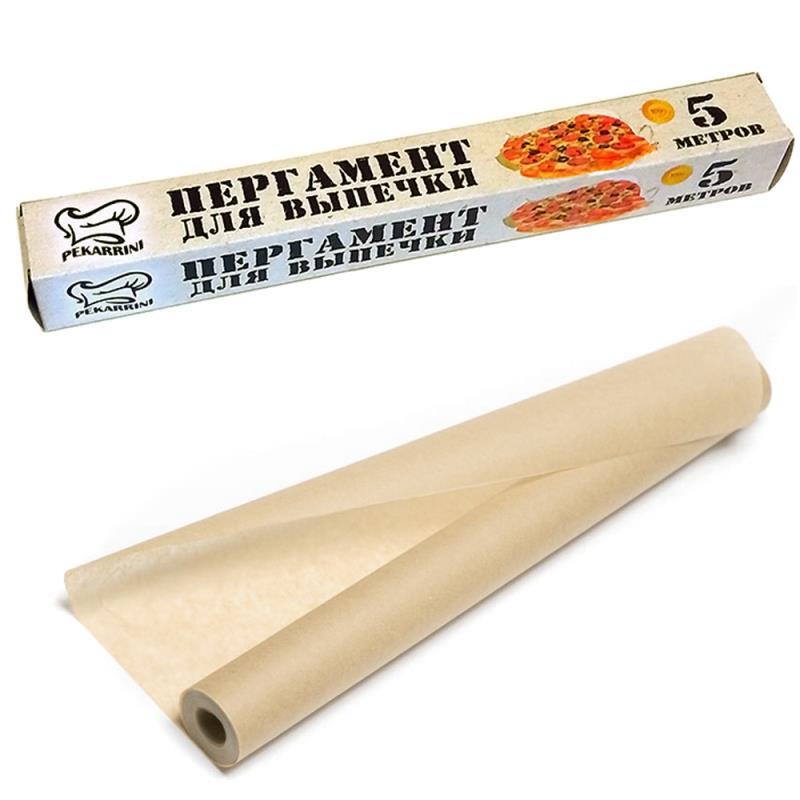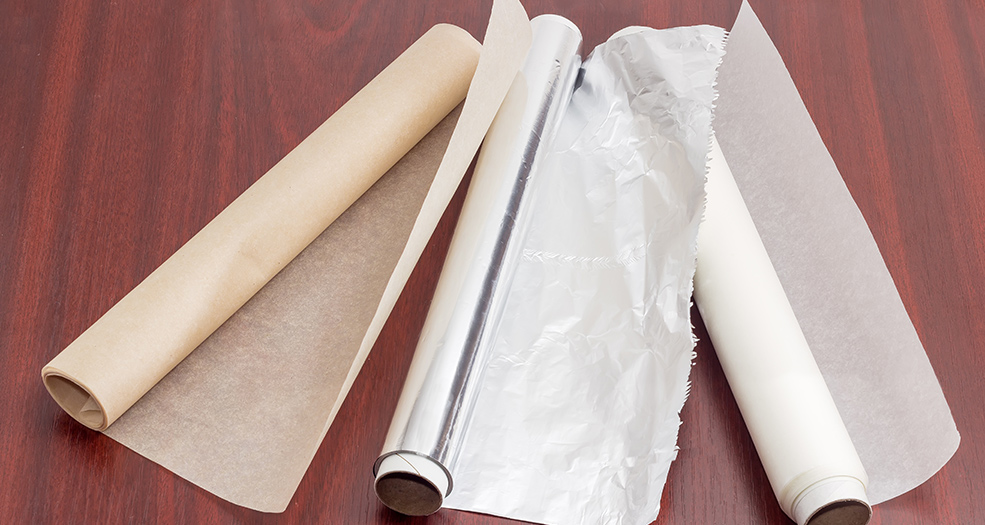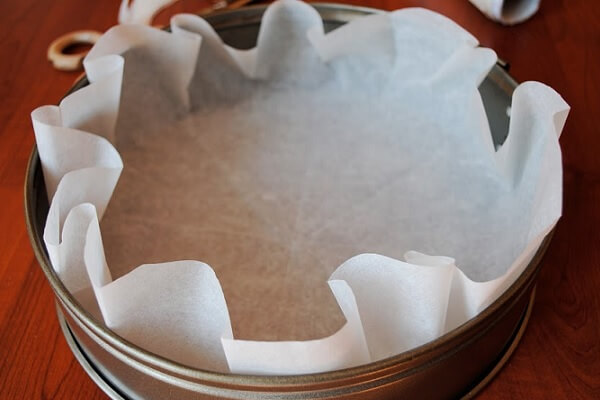All about baking paper: from types of paper to use options and how to replace. Baking paper rating.
Contents
- Baking paper: what is it called?
- What does baking paper look like?
- Types of baking paper
- How can you replace baking paper?
- Baking grades
- Baking paper rating
- How to choose baking paper?
- Which side put the baking paper?
- Why is the dough stuck to baking paper?
- Baking paper stuck - what to do?
- Do parchment paper lubricate before baking with oil?
- Baking paper: reviews
- Video: baking paper. The tricks of use
Baking paper is an indispensable assistant in the kitchen of a good housewife. It is useful not only for baking confectionery, but also for cooking many dishes. In this article, we will analyze what kind of paper it is, how the budgetary from the road is different, and we will talk about the methods of application.
Baking paper: what is it called?
Baking paper has several names:
- Actually baking paper;
- Tracing paper;
- Subperseum;
- Parchment;
- Baking paper with silicone spraying.

What does baking paper look like?
Baking paper is made of special porous filter paper, as well as in some cases with the application of the silicone layer. In appearance, dense, translucent, white or beige, depending on the manufacturer.
Important: today there are many types of parchment paper, and only part of it for baking.
It is also worth noting that under the guise of baking paper to young housewives can sell tracing paper. It is really suitable for the substrate of sand or yeast dough, but in other cases it sticks, deforming the product, and in liquid dishes completely soaks, mixing with food. It is also suitable for a temperature of 180 degrees, and at a higher cracking and burns.

Types of baking paper
Baking paper is a wide segment that differs depending on the requirements in operation:
- Tracing paperwhich can be bought both in household goods and in stationery. Both types are suitable for contact with food. The lowest variety and the most budget, which is more suitable for packaging than for baking;
- Subperse - Thin, but strong paper for baking. Fat, therefore, is more suitable for baking, not afraid of fat (not suitable for marshmallows, meringues, etc.);
- Classic parchment without impregnation. Suitable for a narrow segment of baking, but more often for packaging, frying, etc.;
- Waxed parchment - In an ordinary oven, especially at temperatures above 180 degrees he smokes, but ideal for baking in microwaves. Also suitable for frying, drying, etc. For packaging it is considered expensive and not appropriate;
- Parchment with silicone one -sided coating. One of the sides of the classic parchment is covered with silicone and provides high -quality, uniform baking, without sticking and burning. It is important to lay out with silicone coating for baking;
- Parchment with silicone double -sided coating. Ideal for any type of baking, and thanks to bilateral application, one sheet can be used up to 5-6 times;
- Silicone paper - The most expensive type of baking paper. Usually sold by sheets, not rolls. Durable, high -quality, more dense than other species;
- Baking paper for cupcakes, mafnees, etc. Ready -made forms that are conveniently inserted into metal forms. It is not required to subsequently wash the forms, as well as a more convenient and beautiful supply of finished dishes.
How can you replace baking paper?
Ideas for replacing baking paper are different. From the banal - time to put the dough in the oven, and the baking paper is over, to the desire to find a more durable material for frequent trees:
- In an emergency case, if there is a need to replace the baking paper, you can spread the sleeve for baking;
- If the baking is not afraid of fat, then, as an option, a regular sheet of office paper is carefully lubricated with vegetable or butter;
- Silicone rugs are the most popular modern replacement of baking paper;
- Teflon coating rugs are another universal parchment replacement.

Baking grades
Baking paper (parchment) can be several brands for their intended purpose. In order to understand how to use paper roll without preliminary experiments - look at his brand.
- A B C - brands for packaging, completely unsuitable for baking;
- D. - The brand of parchment, which withstands the temperature of up to 230 degrees Celsius and is suitable for a limited type of baking. At the same time, meringue, marshmallows, mousses, etc. are perfectly dried on it. An indispensable thing for packaging and many options in the kitchen;
- M - It is used in medicine, and not appropriate for the kitchen;
- Vp - for packaging food and confectionery with fat not more than 15%;
- ZhV - parchment not deformed during freezing;
- VP-M - prohibited for contact with food;
- P - Parchment and benchmark for baking, bleached and not white. Suitable for baking all kinds of confectionery;
- Pa - excellent heat -resistant baking paper with special anti -stick coatings;
- PA-2 - Siliconized parchment.
Baking paper rating
In this section, we will give a brief rating of baking paper:
- Nordic Paper - Leader in confectionery. One of the best baking papers that is available for ordinary customers from a professional line. It is sold for sheets for oven, but can be cut comfortable for each size, as the sheets allow. The composition of the paper allows you to save gas or electricity, since it is not required to warm up the forms. Special attention deserves the possibility of preparing a wide line of dishes without fat and liquid;
- Paclan - This is a wide range of baking goods. The paper is produced both classic and with silicone spraying. As well as many disposable forms of baking paper;
- Introplasty -An excellent combination of price-quality, as well as an excellent line. From this manufacturer you can purchase paper for baking D, P, PA. The paper is distinguished by a high level of wear resistance, withstands high temperatures without deformation, does not pass liquid, juices, fat;

- Taveriko - Budget price with excellent quality. Confectioners love this manufacturer due to the economical price, taking into account the characteristics of the paper. Both a biscuit and the most delicate casseroles does not stick to her, does not burn the bottom, and also does not flow fat and liquid;
- Standard Pack - The average price with the highest parchment density, as well as high heat resistance. They do not burn the ends of the paper, and you can serve without removing parchment, which is especially relevant to meat and vegetable casseroles. With some types of dough, you can use up to 10 times (for example, when baking gingerbread);
- Extra -6-meter rolls with a width of 30 cm and the ideal density won the love of young housewives. And the democratic price is ideal for a modest family budget. Such paper is good for a yeast dough and for the most delicate biscuit. For both frying and for stewing in the oven. Allows you to bake at temperatures up to 220 degrees;
- Goznak - Another manufacturer of baking excellent quality. It also produces tracing paper widely used in cooking. Trapping - a budget substrate for drying meringues, baking vegetables and fruits, as well as for yeast dough.
How to choose baking paper?
In order not to blindly rely on the Internet ratings, but to independently evaluate the quality of baking paper, our checks of the young housewives will come in handy in which we have collected the basic requirements for baking paper:
- Type of paper depending on the purpose of use. Of course, siliconized paper is a universal fighter who can do any goals, but in some situations, its use is not economically justified. In such cases, budget tracing paper or the simplest underpermers will be quite good;
- Dimensions. Depending on the size of your forms, both narrow and wide rolls can be suitable. The optimal size is when it comes out by 0.5-1 cm from the shape. If you have a liquid fill or with a broth, a parchment sheet should be integral. For baking cookies, meringues and other things, you can cover the baking sheet with pieces of parchment;
- Paper thickness. It should not dissolve in a finished dish, stick, break, especially if the serving on the table is in parchment;
- The color of the paper. It is brown (beige) and whitened (white). It bears aesthetic appearance, but brown is produced in a more environmentally friendly way. Therefore, if you take care of the ecology of the planet, choose dark waxed paper;
- Material security, certification, eco-production;
- The smell of paper. If it is sharp or saturated silicone - this can be transferred to baking, and also indicate that the product is made of raw materials not intended for contact with food;
- The maximum temperature at which you can use it. Pay attention, since with an increase in this criterion, the paper not only becomes breaking, but can also become toxic;
- Paper purpose- Choose only baking paper. Since not the entire parchment is suitable for this;
- Resistance to moisture, fat, fire. Again, depending on the goals;
- Elasticity. One parchment easily lines the bottom, the other opposite forms hard folds. Hard is only suitable for an even lines of a baking sheet.
Which side put the baking paper?
Depending on the type of paper, you can put it with one or both sides:
- Tracing paper can be placed any of the sides;
- Furchant can be placed any of the sides;
- The waxed parchment must be placed by the coating, to the “wrong” side of the parchment of pastries will stick;
- A one -way siliconized parchment should look at the dough side with silicone spraying;
- You can not look closely to the bilaconized baking sheet and put any of the sides. It is also worth remembering that such sheets can be used several times on one side, and then turn over and once again baked products from the dough on it.

Why is the dough stuck to baking paper?
The dough sticks to baking paper in such cases:
- Low -quality paper;
- This type of baking paper is not intended for this type of dough;
- The temperature regime is disturbed, and the properties of the paper stopped working;
- With reusable use, when the paper coating has already been removed.
Baking paper stuck - what to do?
- If the baking paper stuck to the finished product, the main thing is not to rush, not worry, and not think that the product is irrevocably spoiled. Everything can be corrected. First - let the product cool.
- Next - wipe the paper slightly with a damp sponge. After that, she will “move” from pastries. If the paper crumbles, pry it with a small knife and carefully disconnect in a blessing, without wetting.
- If the bottom is not only sticking, but also burnt out - one exit, cut. To do this, you need a sharp knife and equally cut 1-2 mm above the burnt layer, as it will give the smells of the burn. For a biscuit, you can use a thin nylon thread.
Do parchment paper lubricate before baking with oil?
Young housewives often have a question - whether it is necessary to lubricate the baking paper before laying out the dough or baking foods. It all depends directly on the dish and type of paper. For example, baking paper with silicone coating does not need to be lubricated with fat, but underpermers and tracing paper are usually lubricated with oil so that there is no harassment.
But there are dishes and pastries, in the recipes of which there is a direct recommendation for lubricating paper for baking with vegetable or animal fats. In this case, this layer also saturates the product, and is mandatory.
Baking paper: reviews
Anna: From the moment of the appearance of siliconized paper, I give preference to her. Yes, expensive, but dishes or pastries do not stick to it and have the perfect bottom. Of course, for yeast dough I can use tracing paper, but more and more for packaging. I used to bake on waxed paper, but now it is not easy to find high -quality.
Inga: Cooking is my passion! And in it without baking paper, well, no way. In order to save money, I use three types of paper: tracing paper, sub -periods and parchment with silicone spraying. For some pastries, I use silicone rugs.
Love to cook? You may like our articles:
- What delicious to cook frozen vegetables? Recipes for quick snacks, frozen vegetables in the oven, salmon and ribs with frozen vegetables, dietary, first dishes and salad from a mixture of frozen vegetables;
- Delicious mastic for a cake at home with honey, with condensed milk, with gelatin, marmalade, milk;
- How beautifully cut, lay out fruits: tips. How beautifully cut fruits: apples, pears, citrus fruits.







